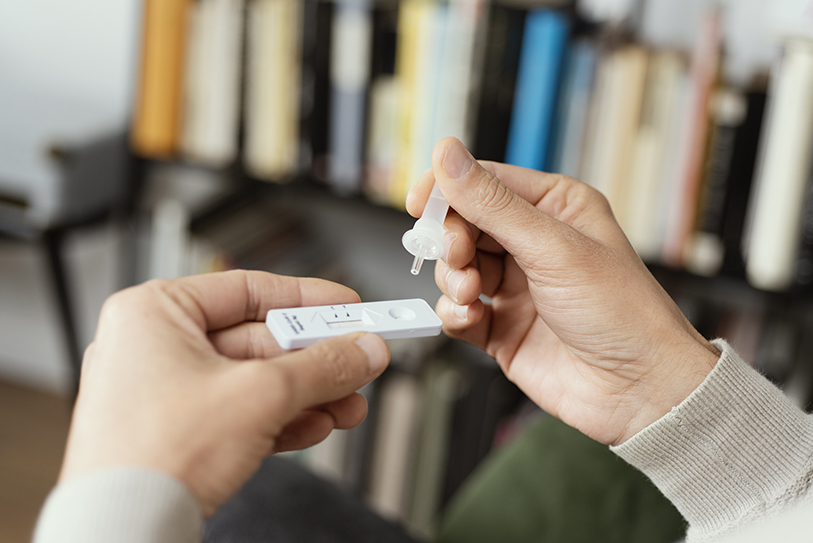On December 30, 2021, shortly after the Centers for Disease Control and Prevention (CDC) announced that it shortened its recommended isolation and quarantine periods for the general population, the California Department of Public Health (CDPH) followed suit.
The CDPH’s updated isolation and quarantine guidance now aligns with the timeframe recommendations from the CDC, which means that those who test positive for COVID-19, regardless of vaccination status, must isolate themselves. Per the CDPH guidance:
- They must stay home for at least five days. Isolation can end after day five if symptoms either aren’t present, or they’re resolving and a diagnostic specimen (antigen test preferred) collected on day five or later tests negative.
- If they’re unable to test or choose not to test, and symptoms aren’t present or are resolving, isolation can end after day 10.
- If fever is present, isolation should be continued until fever resolves.
- If symptoms other than fever aren’t resolving, they must continue to isolate until symptoms are resolving or until after day 10.
- Wear a well-fitting mask around others for a total of 10 days, especially in indoor settings.
For individuals who are boosted, or vaccinated but not yet booster-eligible, and are exposed to someone with COVID-19, they’re not required to quarantine, but it’s recommended that they:
- Test on day five.
- Wear a well-fitting mask around others for 10 days, especially in indoor settings.
- If testing positive, follow isolation recommendations above.
- If symptoms develop, test and stay home.
“Booster-eligible” is determined by reference to the CDC’s Booster Shot guidance, which, at the time of publication, included the major vaccines and eligibility criteria listed below.
| COVID-19 Vaccine | Primary vaccination series | When is an individual booster eligible? |
| Moderna or Pfizer-BioNTech | 1st and 2nd doses | Five months after second dose |
| Johnson and Johnson [J&J]/Janssen | 1st dose | Two months after first dose |
Individuals exposed to someone with COVID-19 who are either (1) unvaccinated or (2) vaccinated and booster-eligible but haven’t yet received their booster dose — including individuals in both categories who were infected with SARS-CoV-2 within the last 90 days — must quarantine. The CDPH guidance for these individuals is as follows:
- Stay home for at least five days following the last contact with a COVID-19-positive person.
- Test on day five.
- Quarantine can end after day five if symptoms aren’t present and a diagnostic specimen collected on day five or later tests negative.
- If they’re unable to test or choose not to test, and symptoms aren’t present, quarantine can end after day 10.
- Wear a well-fitting mask around others for a total of 10 days, especially in indoor settings.
- If testing positive, follow isolation recommendations above.
- If symptoms develop, test and stay home.
CDPH guidance reminds employers that they’re subject to the California Division of Occupational Safety and Health (Cal/OSHA) COVID-19 Prevention Emergency Temporary Standards (ETS) and should consult those regulations for additional applicable requirements.
How CDPH Guidance Impacts Cal/OSHA COVID-19 ETS Exclusion Requirements
Under Executive Order N-84-20, signed in December 2020, Sections 3205(c)(10) and (11) of the Cal/OSHA ETS (addressing when an employee may return to work) are suspended to the extent that those time periods are longer than CDPH or local health guidance. Specifically, the executive order states:
(7) The exclusion periods required in California Code of Regulations, Title 8, section 3205( c)( 10) and the periods for which a worker shall not return to work specified in section 3205( c) ( 11) shall be suspended to the extent that they exceed the longer of:
a. Any applicable quarantine or isolation period recommended by the CDPH, including in the December 14, 2020 Updated COVID19 Quarantine Guidelines (emphasis added); or
b. Any applicable quarantine or isolation period recommended or ordered by a local health officer who has jurisdiction over the workplace.
Additionally, according to the executive order, if the exclusion periods under the ETS change, Cal/OSHA is to provide notice of the change, including on its website. As of the time of publication, Cal/OSHA has not posted an update, but employers should continue to monitor for updated guidance.
Bianca N. Saad; Vice President, Labor and Employment – Content, Training and Advice; CalChamber
Visit the CalChamber Coronavirus (COVID-19) webpage for more COVID-19-related federal, state and local resources, including CalChamber coverage.



